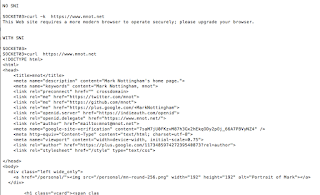


It gets called with 6 arguments on each TLS message: However, when in a pickle, it can be very useful. Thus you can absolutely not rely on its future existence and behavior. This is something the ssl maintainers added for themselves as a private debugging tool. In Python 3.8 and later, you can set a super secret callback attribute on ssl.SSLContext called _msg_callback. SSL added and removed here! 😀 Python Secret: ssl.SSLContext has a Message Callback Then you can use that file to decrypt captured TLS traffic by loading it in Wireshark: Preferences → Protocols → TLS → (Pre)-Master Secret log filename

Set the well-known environment variable SSLKEYLOGFILE to a file name and software that supports it will write the connection-specific secret keys into it. This is well-described in Everything curl for curl, but it works with every Go program and Python script too: While encryption is there to exactly not do that, you actually can snoop into encrypted traffic. Bonus: Peeking Into Encrypted TLS Traffic While my particular troubles ended here, let’s look further what else you can do! For instance, for troubleshooting handshakes this is all good, sometimes you need to look into the encrypted traffic and that’s where it gets interesting. But now I could send it to the other party to help them debug it on their end. As suspected, the server was refusing my client certificate.


 0 kommentar(er)
0 kommentar(er)
